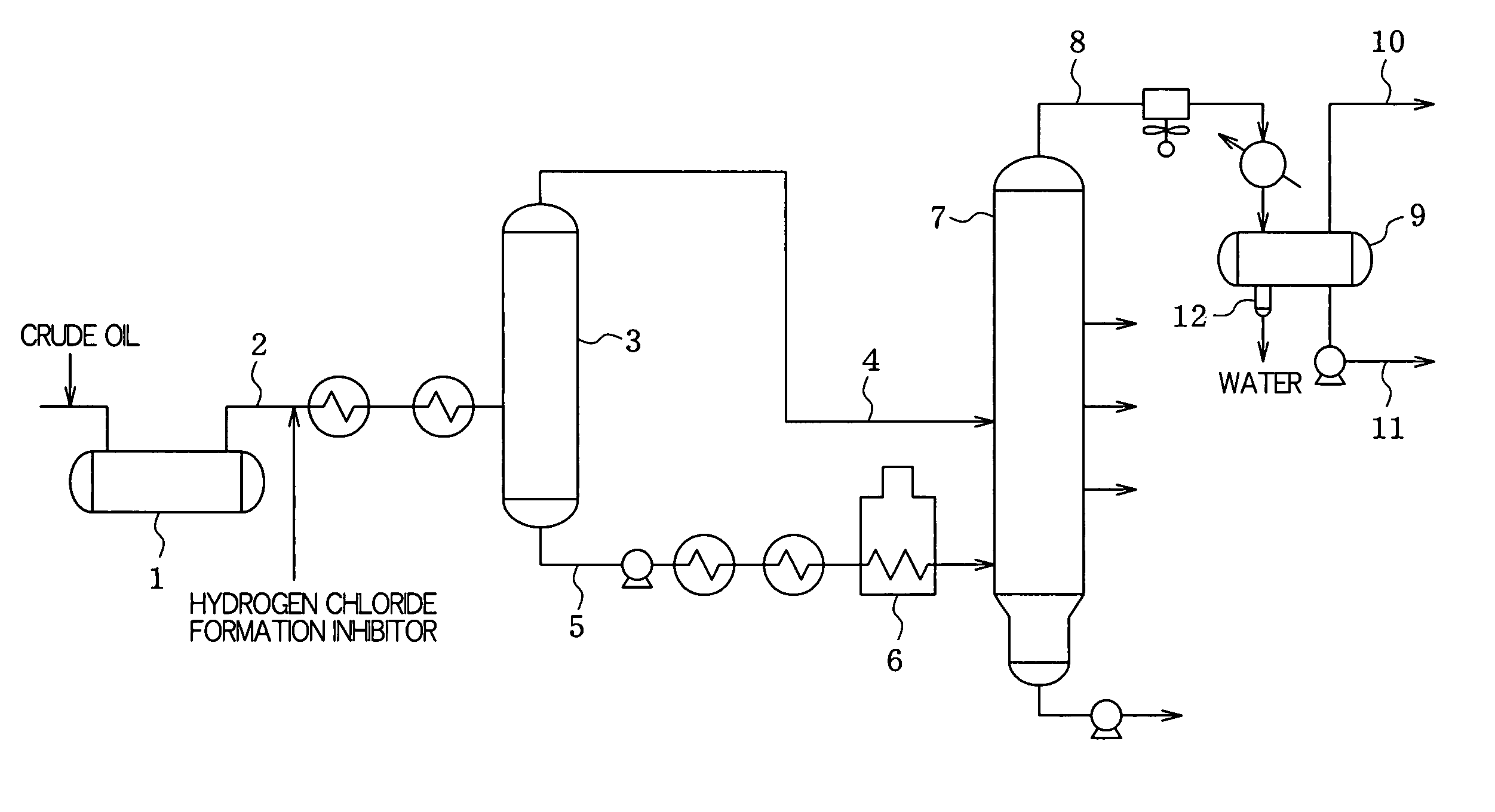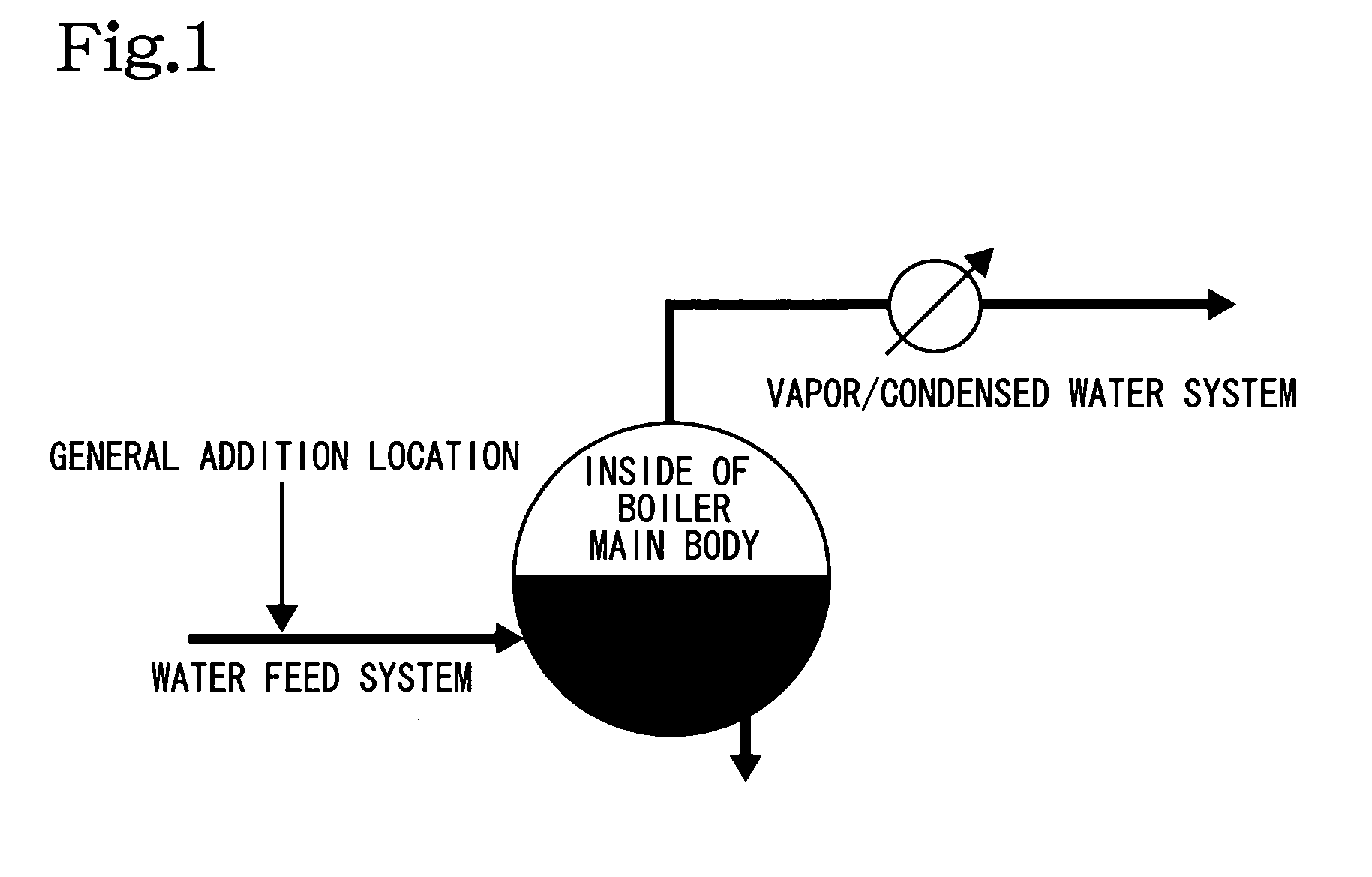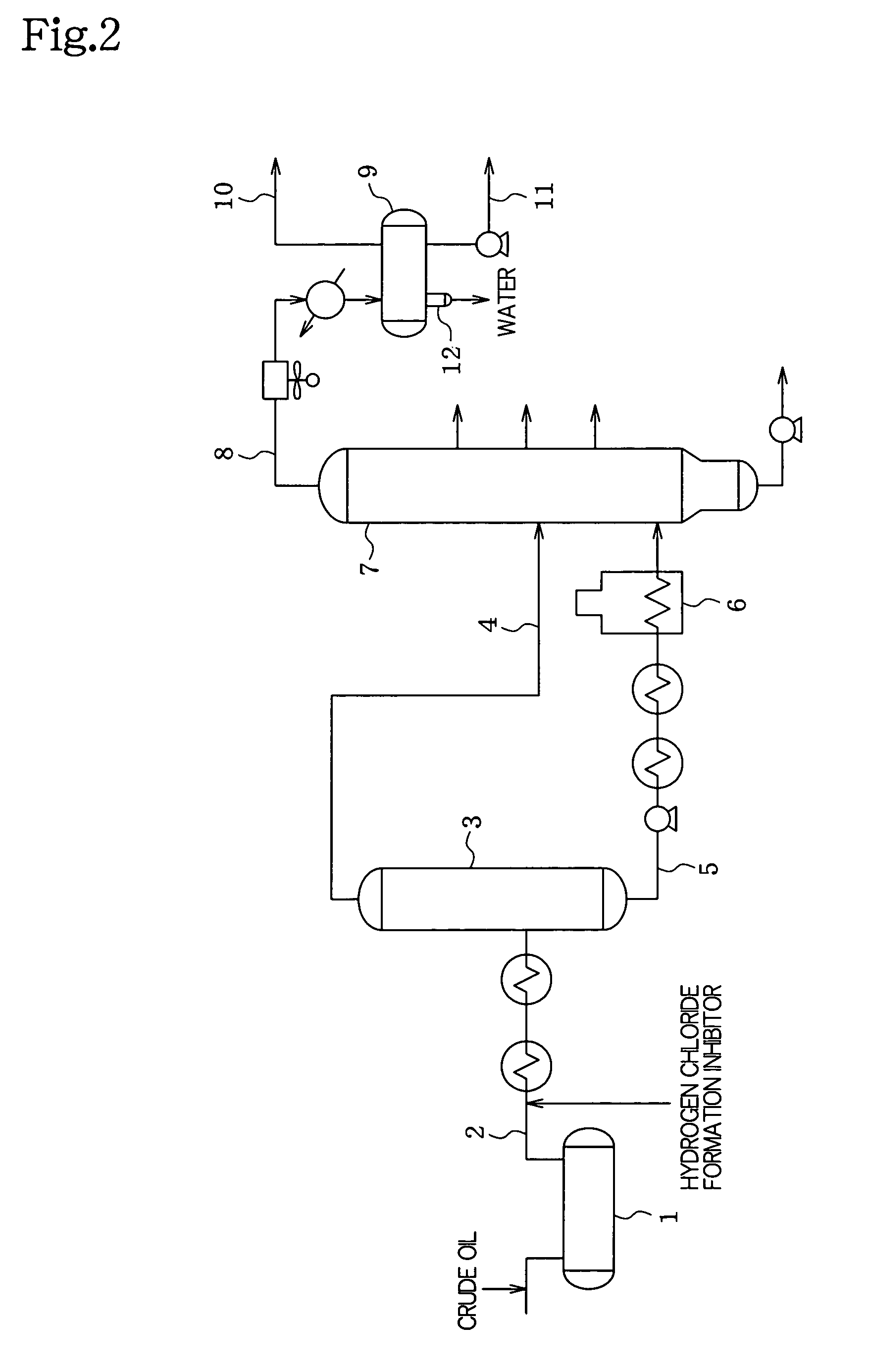Metal corrosion inhibitor and hydrogen chloride formation inhibitor in a crude oil atmospheric distillation unit
a technology of metal corrosion inhibitor and hydrogen chloride formation inhibitor, which is applied in the direction of distillation corrosion inhibition, other chemical processes, specific water treatment objectives, etc., can solve the problems of low ph, corrosion of the metal of the unit, and the steam generation unit of a process system may become contaminated with acid components, so as to reduce the risk of secondary corrosion, prevent corrosion, and prevent corrosion
- Summary
- Abstract
- Description
- Claims
- Application Information
AI Technical Summary
Benefits of technology
Problems solved by technology
Method used
Image
Examples
example 1
[Neutralizing Capability]
[0086]The pH values of (β-hydroxyethyl)trimethylammonium hydroxide (choline), monoethanolamine, ammonia, cyclohexylamine and morpholine were measured using a pH meter (manufactured by Horiba, product name pH Meter F-21), and the respective base dissociation constants (Kb value, 25° C.) were calculated. These base dissociation constants are an indicator of neutralizing capability, with a larger number indicating that the substance has a higher degree of dissociation and is more strongly basic. The results are shown in Table 1.
[0087]
TABLE 1Kb value (25° C.)Choline3.14 × 10−3Monoethanolamine3.15 × 10−5Ammonia1.82 × 10−5Cyclohexylamine3.39 × 10−4Morpholine2.09 × 10−6
[0088]It is understood from Table 1 that since (β-hydroxyethyl)trimethylammonium hydroxide has a larger base dissociation constant than the ammonia and amines, it is more strongly basic.
[0089]Next, the quantity of added ammonia or amines necessary to achieve a pH of 10.0, 10.5 or 11.0 in the boiler w...
example 2
[Corrosiveness of Hydrochlorides]
[0093]The following corrosion test was performed to evaluate the corrosiveness of hydrochlorides of ammonia or amines ((β-hydroxyethyl)trimethylammonium hydroxide, ammonia, monoethanolamine, 3-methoxypropylamine and dimethylethanolamine).
[0094]In the corrosion test, the hydrochlorides of the aforementioned ammonia and amines were poured into glass beakers at concentrations of 50% by mass (hydrochloride:pure water=1:1), and test pieces (50×15×1 mm, sanded with #400 sandpaper, degreased with toluene) of carbon steel (SPCC) were immersed in the beakers for 20 hours at 50° C. under argon deaeration (anoxic conditions). The test pieces were derusted after testing, and corrosion speed (mg / dm2 / day) was calculated from the difference in mass before and after testing. The results are shown in Table 3.
[0095]
TABLE 3Kind of ammonia or aminesCorrosion speed (mdd)Choline32Ammonia256Monoethanolamine1323-methoxypropylamine480Dimethylethanolamine288
[0096]It is unders...
PUM
| Property | Measurement | Unit |
|---|---|---|
| concentration | aaaaa | aaaaa |
| pressure | aaaaa | aaaaa |
| concentration | aaaaa | aaaaa |
Abstract
Description
Claims
Application Information
 Login to View More
Login to View More - R&D
- Intellectual Property
- Life Sciences
- Materials
- Tech Scout
- Unparalleled Data Quality
- Higher Quality Content
- 60% Fewer Hallucinations
Browse by: Latest US Patents, China's latest patents, Technical Efficacy Thesaurus, Application Domain, Technology Topic, Popular Technical Reports.
© 2025 PatSnap. All rights reserved.Legal|Privacy policy|Modern Slavery Act Transparency Statement|Sitemap|About US| Contact US: help@patsnap.com



